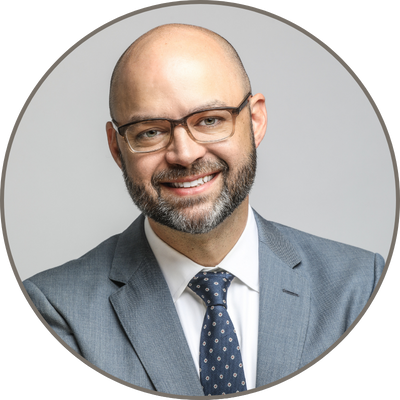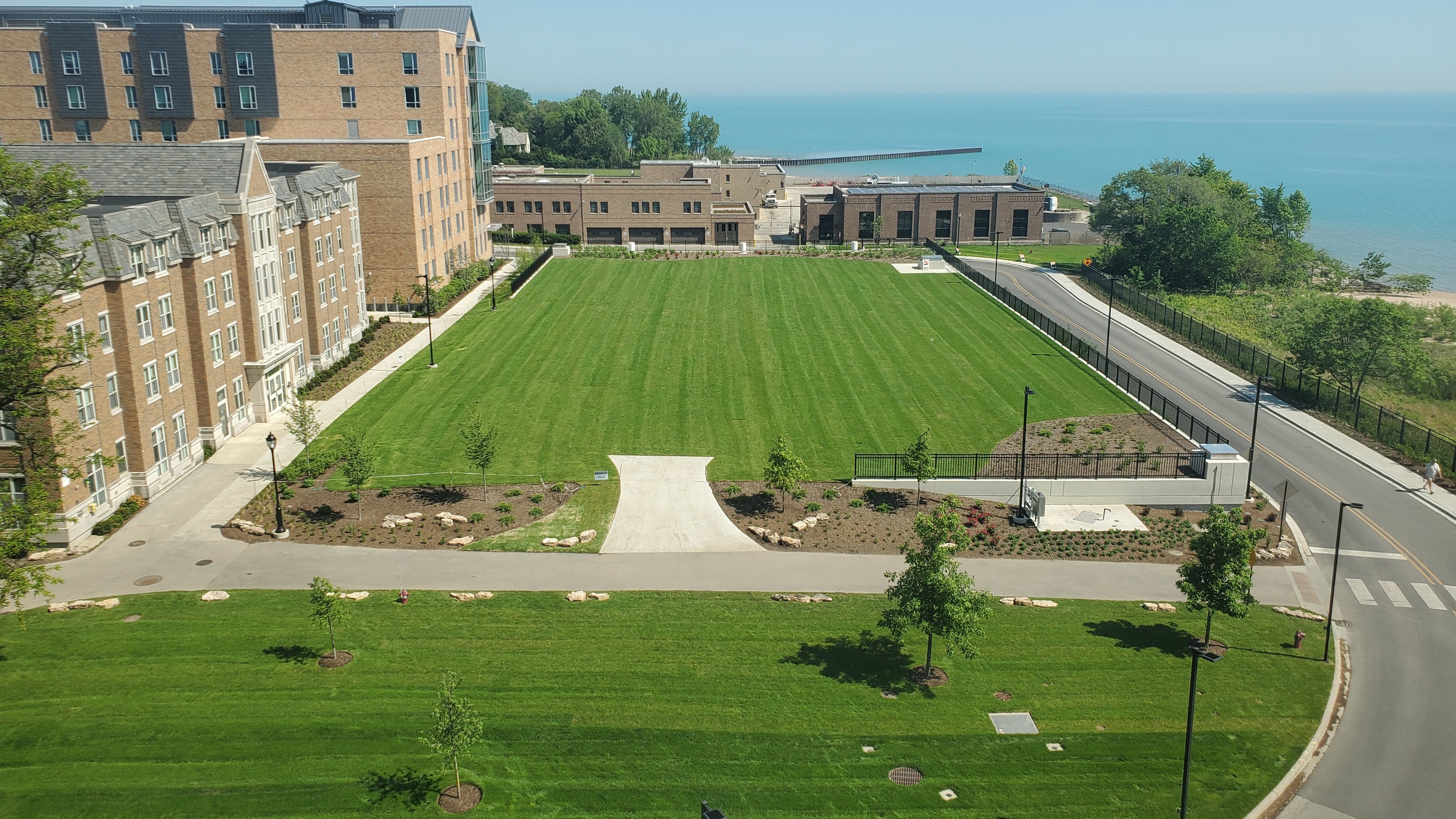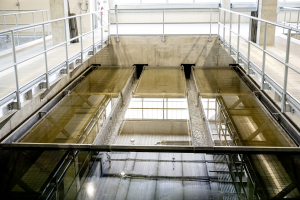Taxiway L at Northeast Philadelphia Airport (PNE) Is Awarded Envision Silver
13-June-2025
The improvements help meet anticipated capacity requirements and flight activity and put sustainability at the core of the project.Read more

Category
Archive
13-June-2025
The improvements help meet anticipated capacity requirements and flight activity and put sustainability at the core of the project.Read more
11-June-2025
 Anthony Kane, President & CEO of ISI, received a ‘Highly Commended’ award at the Sustainability Delivery Awards in Chicago last week. Anthony was recognized in the category Sustainability Leader of the Year (CSO or equivalent) in recognition of his contributions to the growth of ISI and the Envision community in 2024, which supported the efforts of more organizations and civil infrastructure projects to reach their sustainability goals. ISI’s awards submission emphasized Anthony’s dedicated leadership, highlighting themes of operational resilience and future-readiness, more intensive international engagement, and greater impact for ISI.
Anthony Kane, President & CEO of ISI, received a ‘Highly Commended’ award at the Sustainability Delivery Awards in Chicago last week. Anthony was recognized in the category Sustainability Leader of the Year (CSO or equivalent) in recognition of his contributions to the growth of ISI and the Envision community in 2024, which supported the efforts of more organizations and civil infrastructure projects to reach their sustainability goals. ISI’s awards submission emphasized Anthony’s dedicated leadership, highlighting themes of operational resilience and future-readiness, more intensive international engagement, and greater impact for ISI.
These awards are organized by Environment Analyst as part of the Sustainability Delivery Summit to recognize and celebrate industry excellence in the sector, and applaud those organizations who have made significant advances in both their own and their clients’ sustainability journeys. View all the winners here, who included many ISI member organizations.
Congratulations as well to Kailey Eldredge, Verification Director at ISI, and Jennifer Ninete, Director of Engagement at ISI, for their presentations at the Sustainability Delivery Summit. They led an interactive workshop, titled “Implementing the Envision Framework for Sustainable Infrastructure.” Ninete was also a panelist for a featured discussion on Making the Business Case for Sustainability in 2025.
5-June-2025
BCIT turned the occasion of critically needed remediation works into an opportunity to restore part of the nearby creek system. Read more
4-June-2025
ISI and the Envision Review Board (ERB) initiated a process to refine the Envision Sustainable Infrastructure Framework to develop Envision v4. The new version will address challenges in v3, improve clarity, refine credit language, and enhance global relevance based on evolving user needs and feedback.
Our Envision survey was open in June and July, inviting users to comment on topics including but not limited to:
The survey is now closed.
Thank you to everyone who took the time to share their feedback. The input collected will help us improve the Envision Framework for the entire infrastructure community. Visit our Envision v4 page if you would like detailed information the Envision v4 process and timeline: Envision v4
30-May-2025

A valuable role in integrating ESG principles into engineering education.
Integrating environmental, social and governance (ESG) into organizational practice creates value for a wide range of stakeholders and impacted groups — and requires academic programs to prepare graduates with the relevant skills, knowledge, and abilities.
While there is no one-size-fits-all formula for strengthening ties between educators and professionals to ensure graduates are prepared technically, socially, and ethically, a forthcoming article shines a light on those strategic partnerships and opportunities to embed ESG principles into engineering education.
Using policies and practices from the U.S. Army Corps of Engineers (USACE) and accreditation requirements from the Engineering Accreditation Commission of ABET, the article in the Journal of Engineering Management provides an illustrative case study illuminating some opportunities related to advancing ESG in the AEC industry through collaborative engineering education and practice.
To provide a specific illustration of how their study can be applied, the authors created an inland navigation example connecting ABET requirements to Sustainable Development Goal (SDG) 9: Build resilient infrastructure, promote inclusive and sustainable industrialization and foster innovation. The authors build on prior work by introducing the Envision Sustainable Infrastructure Framework as a tool and using credits associated with the Climate and Resilience (CR) category.
Professor Yvette Pearson of the University of Texas Dallas and her colleagues write that educators can apply tools such as the Envision framework to teach sustainable and inclusive design practices. These collaborations can be integrated into both curricular and cocurricular activities, enhancing students’ awareness and ability to tackle complex ESG-related issues.
To access this article, published in the Journal of Engineering Management, Vol 41, Issue 4 (July 2025), visit: https://ascelibrary.org/doi/10.1061/JMENEA.MEENG-6566
13-May-2025
By ISI Guest Author:
Eric Bill, Autocase, President & Chief Economist
In the face of intensifying climate risks, rising infrastructure costs, and now — significant pullbacks in federal support under the current U.S. administration — cities, agencies, and public asset owners are being asked to do more with less. Meanwhile, macroeconomic shifts in jurisdictions like Germany and the EU are driving massive infrastructure investment as fiscal stimulus. In both cases, a powerful but underutilized tool is emerging as essential: economic analysis.
From life cycle cost analysis (LCCA) to benefit-cost analysis (BCA) and triple bottom line (TBL) assessments, economic evaluation is becoming indispensable for planning, justifying, and optimizing resilient and sustainable infrastructure. This article explores why economic analysis matters more than ever, how the federal policy landscape is shifting, how the Envision Rating System promotes best practices in valuation (notably through credit LD3.3), and how firms like ours at Autocase Economic Advisory are helping infrastructure stakeholders raise the bar.

Historically, infrastructure planning has prioritized lowest first cost. But with today’s aging assets, climate vulnerabilities, and tightening budgets, short-term thinking can result in long-term costs or missed opportunities.
Economic analysis offers a more complete view, accounting for:
This broader lens enables better decisions. Cities and agencies can compare options, prioritize limited funding, and communicate long-term value to stakeholders ranging from engineers to elected officials and communities.
Recent federal proposals — particularly the 2025 budget from the Trump administration — signal cuts to cornerstone sustainability programs, including:
While these cuts are framed as cost-saving, the message to state and local governments is clear: federal funding will be harder to secure.
This makes economic justification critical. Project teams will need to clearly demonstrate the return on investment (ROI) of resilience and sustainability measures. That’s where economic analysis plays a vital role.
The Envision Rating System — developed by the Institute for Sustainable Infrastructure (ISI)—is a leading framework for evaluating sustainable infrastructure. Among its most impactful, yet underutilized, tools is LD3.3: Conduct a Life-Cycle Economic Evaluation.
This credit encourages project teams to:
LD3.3 recognizes that sustainability and resilience are not just environmental or social imperatives—they’re economic imperatives. Projects that cost more upfront may deliver significantly higher value over time. Think: elevating substations to reduce flood risk, integrating green infrastructure to cut stormwater costs, or specifying low-energy systems to reduce operational expenses.
For example, the Miami-Dade County Dolphin Station Park-and-Ride Transit Terminal Facility earned Envision Verified recognition for its innovative approach to multimodal access, lifecycle planning, and user benefit quantification—including health and emissions outcomes.
We are also supporting the ongoing West Field Utility project at San Francisco International Airport (SFO), where our team is applying LD3.3 to evaluate long-term trade-offs across design alternatives, including resilience dividends, operational cost savings, and decarbonization potential.
Especially as funding tightens, LD3.3 is more than a checkbox — it’s a strategic tool for maximizing value, accessing grants, and future-proofing infrastructure design.
Our firm operates at the intersection of infrastructure and real estate planning — supporting architects, engineers, and planners in designing and delivering more resilient, sustainable, and cost-effective capital projects.
Through both software and advisory services, we help clients:
To date, we’ve supported more than $150 billion in capital planning across airports, utilities, cities, universities, and the private sector — helping stakeholders answer questions like:
Infrastructure assets often last 30 to 100 years, yet the financial decisions that shape them are frequently made on a much shorter time horizon — typically 3 to 5 years.
By applying tools such as:
…project teams can avoid “penny wise, pound foolish” decisions and deliver infrastructure that is durable, efficient, and aligned with long-term public goals. These methods also support:
To help planners, designers, and decision-makers apply these methods with confidence, we’ve developed continuing education programs on economic and business case analysis for leading industry platforms, including:
Thousands of professionals have completed these courses — gaining practical skills to assess sustainable alternatives, justify resilient strategies, and drive better project outcomes.
While current policy headwinds may feel like a setback, they also present an opportunity: to strengthen the case for sustainability with better data and better tools.
Economic analysis isn’t just about spreadsheets — it’s about strategy. It enables agencies and developers to:
In an era where every dollar counts, economic analysis bridges the gap between bold engineering vision and fiscal reality. With the right frameworks — like Envision’s LD3.3 credit — we can build infrastructure that lasts and maximizes value to cities and stakeholders.
 Eric Bill is the President and Chief Economist of Autocase and leads the infrastructure and real estate research and economics advisory team and SaaS business. Eric has extensive experience leveraging economic concepts to incorporate climate adaptation, sustainability, and resilience into capital project decision making and policy development and has worked on over $100B of projects globally for corporations, utilities, investors, developers, non-profits, and all levels of government. He has written economics and business case credits for LEED, Envision, and RELi resilience rating systems and has developed continuing education economics and business case credit training programs for the US Green Building Council (USGBC), the American Institute of Architects (AIA), the American Society of Civil Engineers (ASCE), and the Institute for Sustainable Infrastructure (ISI).
Eric Bill is the President and Chief Economist of Autocase and leads the infrastructure and real estate research and economics advisory team and SaaS business. Eric has extensive experience leveraging economic concepts to incorporate climate adaptation, sustainability, and resilience into capital project decision making and policy development and has worked on over $100B of projects globally for corporations, utilities, investors, developers, non-profits, and all levels of government. He has written economics and business case credits for LEED, Envision, and RELi resilience rating systems and has developed continuing education economics and business case credit training programs for the US Green Building Council (USGBC), the American Institute of Architects (AIA), the American Society of Civil Engineers (ASCE), and the Institute for Sustainable Infrastructure (ISI).
9-May-2025

The Clearwell 9 Replacement Project in Evanston, Illinois transformed a parking lot into green space with access to beaches and views of Lake Michigan.
During Drinking Water Week (May 4–10), ISI recognizes the paramount importance of ensuring universal access to safe and reliable drinking water and the work of water professionals in supporting that effort. We would like to take this opportunity to highlight the following Envision-awarded projects that furthered the goals of sustainable water infrastructure in cities and communities from coast to coast.
The City of Santa Monica Sustainable Water Infrastructure Project (Envision Platinum, 2024) in Santa Monica, California is an advanced treatment water recycling plant that treats the city’s municipal wastewater, stormwater (wet-weather), and urban runoff (dry-weather) with the new stormwater harvesting tank. The project reduces the city’s traditional reliance on costly imported freshwater resources from Northern California and the Colorado River by creating new, local water supplies.
The Clearwell 9 Replacement Project in Evanston, Illinois (Envision Verified, 2022) included the replacement of a five-million gallon treated water storage reservoir with a new similarly sized facility, a new overflow, a new submersible pumping system, and site piping modifications. An existing parking lot was transformed into new green space for bikers and walkers as part of the project, allowing them to enjoy the view of Lake Michigan and providing better access to the beach.
Denver Water’s Northwater Treatment Plant in Denver, Colorado (Envision Gold, 2020) is a 75-million gallon per day state-of-the-art facility supplementing Denver Water’s Moffat Water Treatment Plant. The project makes it possible to extend Moffat’s useful life for two more decades while giving additional operational flexibility to Denver Water, with four drinking water treatment plants instead of three.

Treating and filtering water from the Saco River in Biddeford, Maine.
The Ion Exchange Resin Plant and East Water Treatment Plant Improvements Project (Envision Bronze, 2017) located in Boynton Beach, Florida involved upgrades to an existing plant. The project met the community’s need to diversify water sources to reduce dependence on the surficial aquifer. This project also focused on protecting the local environment and drinking water supply by avoiding saltwater intrusion.
The Line J Section 1 Pipeline Project located in Tarrant, Texas and led by Tarrant Regional Water District (Envision Silver, 2014) was a two-mile, 108-inch diameter pipeline built to deliver water from the Kennedale Balancing Reservoir directly to the Arlington Outlet. The project improved the net quality of life for many of the communities served by the water district by increasing their ability to transfer raw water to 1.9 million users. This infrastructure owner also undertook the Integrated Pipeline Project (Envision Platinum, 2016), a 150-mile long water transmission system built by two North Texas water suppliers to help meet water demands in rapidly growing Tarrant, Dallas and surrounding counties.
The Saco River Water Treatment Plant in Biddeford, Maine (Envision Silver, 2022) treats and filters water from the Saco River so that 40,000 people in Biddeford as well as two nearby communities have a reliable supply of high-quality drinking water. Sustainability achievements included wetland restoration and protection of groundwater resources, an emphasis on flood-resilience, and new onsite power generation through a photovoltaic solar array.
The Seneca Water Treatment Plant Improvements Project (Envision Silver, 2017) in Seneca, South Carolina focused on upgrades to a vital facility to improve efficiency and safety for plant employees and the surrounding community. Sustainability achievements included measures to reduce operational noise, aesthetic features to preserve the local character of the community, and improvements to the safety of the facility for workers and residents in the area.
Tualatin Valley Water District’s (TVWD) Ridgewood View Park Reservoir and Pump Station in Tualatin Valley, Oregon (Envision Gold, 2016) was the first joint water storage reservoir and park facility to receive an Envision award from ISI . The project included 6,700 feet of new water pipelines and extensive improvements to Ridgewood View Park.
Vivion Transmission Main – Chouteau to Brighton in Kansas City, Missouri (Envision Bronze, 2019) involved construction of a 10,000-foot 36-inch water transmission main through city park property. The pipeline was designed and built to align with a future recreational trail of the KCMO Parks & Recreation Department and the Public Works Department.
Find all water related projects in our Project Awards Directory.
7-May-2025
Opened to traffic in August of 2023, the 95/395 Express Lanes Project became the longest reversible road in the United States.Read more
30-April-2025

ISI is supporting 2025 Environment Analyst Sustainability Delivery Summit, which is is coming to Chicago June 9–11. This annual event brings together sustainability leaders, policymakers, and environmental and sustainability consultants to drive collective action, analyze growth and market trends, provide strategic insights, and unlock investment and financing opportunities.
On June 10 in the morning, ISI’s Kailey Eldredge and Jennifer Ninete will lead an interactive workshop, titled “Implementing the Envision Framework for Sustainable Infrastructure.”
Participants will explore a practical approach for integrating sustainability assessment metrics into project planning, design, and construction to enable sustainable, resilient, and equitable infrastructure. This will include a look at how Envision can integrate into the capital development process, guidance for mapping Envision to firm sustainability goals, best practices for developing a sustainability management plan, and insights on procuring sustainability services.
Click this link for more about the ISI workshop.
About the Sustainability Delivery Summit
The Sustainability Delivery Summit, organized by Environment Analyst, provides opportunities for attendees to:
➡️ Learn from global best-in-class sustainable infrastructure projects and hear from leading organizations advancing climate-resilient initiatives
➡️ Engage in collaborative discussions with industry stakeholders and solution providers, sharing strategies and experiences in a supportive environment
➡️ Gain practical skills for embedding sustainability into your projects, from building a solid business case to mastering the soft skills needed to lead sustainability initiatives
➡️ Stay up to date with the latest policy, regulatory, and funding changes from key decision-makers and government bodies.
During the lead-up to this event, Environment Analyst published the Corporate Guide: Delivering Resilient Infrastructure, in February 2025. ISI contributed Chapter 6, “Making your project investable – embedding ESG throughout delivery.” You can access the guide at this link.
30-April-2025

Transit agencies continue to raise expectations for sustainability and resiliency both at the project and the agency level.
A Complementary Approach
Project teams and owners are increasingly relying on well-established sustainability frameworks with respected track records to shape their approach to planning, designing, and constructing infrastructure. The shift comes as climate change, ESG (Environmental, Social, and Governance), and growing public awareness drive a movement toward more sustainable capital project development.
The fact that most ratings systems are applied with the intent to achieve similar outcomes can bring about the misconception that these systems are in competition with one another. However, ISI’s experience shows the opposite. These frameworks can be used simultaneously to work towards related overarching sustainability, resiliency, and equity goals, with application to different project components, as appropriate.
Transit agencies continue to raise expectations for sustainability and resiliency both at the project and the agency level. The drive toward continuous improvement for sustainability in the transit sector has led to an increasing use of two major rating systems: Envision and LEED. The Envision Sustainable Infrastructure Framework, developed by the Institute for Sustainable Infrastructure (ISI), focuses on infrastructure sustainability, while LEED, developed by the U.S. Green Building Council (USGBC), focuses buildings and indoor spaces. Together, the two frameworks address complementary aspects of our built environment with a goal to improve the overall sustainability and resiliency of our communities.
Envision and LEED provide comprehensive assessment toolset
When considering which sustainability framework could be most beneficial, project teams should consider the full range of project elements. For transit projects, this often involves both infrastructure, such as tracks, rail alignment and communications systems, and human occupied spaces, such as transit stations and maintenance facilities.
Due to this range of components, a broad trend seen over the past several years is the application of more than one sustainability rating system to drive stronger environmental, social, and economic outcomes in transit projects, including for light rail, streetcar, and bus rapid transit (BRT) systems.
To better understand where synergies lie between LEED and Envision, ISI recently compiled a high-level comparison showing Envision credits that include similar components as those outlined in LEED credit requirements and vice versa. View the comparison here.
LEED has also published a Transit User Guide for design and construction with guidance that applies only to transit, with the intent to certify individual transit stations. The LEED Building Design and Construction (BD+C) Transit Stations rating system, developed in partnership with industry experts, tests LEED adaptations for newly constructed transit stations, helping to make the transit sector more sustainable. While still in a pilot phase, this system offers valuable insights into the growing trend of applying building-focused sustainability measures to transit environments.
When projects do not fit neatly into either the building or infrastructure sector, it makes sense for project teams to employ multiple frameworks simultaneously to more holistically guide sustainability decisions. Many transit projects are leveraging both Envision and LEED to maximize sustainability benefits. Alignment between systems can mean the activities outlined in one can often support the other. When a project includes both building and infrastructure elements, concurrent use of frameworks provides compounding benefits such as:
Example: The Kansas City Streetcar project located in Kansas City, Missouri, was awarded Envision Platinum (v2) in 2016, and a significant component of the project – the vehicle maintenance facility – previously earned LEED Gold (BD+C v3) in 2009. While the LEED certification specifically recognized the maintenance facility (Singleton Yard) for its use of recycled materials and diversion of construction waste from landfills, the Envision Award verified the project’s integration of sustainability throughout planning and design for the entire project – including the streetcar tracks, vehicles, signalling and communications, station amenities, and landscaping in addition to the maintenance facility. The Envision Award comprehensively celebrates the project team’s leadership in providing sustainable transportation to meet future demand, establishing strong processes for long-term community engagement, and prioritizing economic development for the city. Together, the Envision and LEED sustainability achievements show how the two systems can work synergistically to develop more sustainable projects within the built environment of our communities.
Example: The Downtown Redmond Link Extension project in Redmond, Washington was awarded Envision Platinum (v3) in 2022, and its Operations and Maintenance Facility East (OMF East) was LEED Gold certified (BD+C v4) in 2021. The project extends the existing light rail system (which runs on 100% carbon-free electricity) to previously underserved communities, providing new connections to other sustainable, high-capacity transportation options such as trains, ferries, buses, monorails, and streetcars. The Envision Award comprehensively recognized the planning and design of the entire project – including the 3.4-mile extension with new surface and elevated guideway structure, new stations, a parking garage, and associated utility, drainage, environmental, and roadway improvements. The award highlighted the project team’s efforts to reclaim brownfields, enhance and restore adjacent wetlands, and empower the surrounding community to participate in the project through meaningful stakeholder engagement. This engagement ultimately informed the final design of the station plazas, the public amenities, and the connected pedestrian and bike trails. The LEED certification highlights the sustainability achievements of the new OMF East, a critical facility that supports this project and future expansion by providing inspection, service, maintenance, storage, and deployment for up to 96 light rail vehicles. The LEED certification highlights the facility’s water capture and reuse system, energy-efficient mechanical systems, solar panels, sustainable materials, and construction waste diversion efforts. The Downtown Redmond Link Extension demonstrates how project teams might use both Envision and LEED across the same project to maximize complementary sustainability outcomes.
The Rising Importance of Sustainability Credentials
As the demand for sustainable transit infrastructure grows, so does the need for professionals who understand multiple rating systems. Many professionals across disciplines—civil engineers, planners, project managers, construction professionals, and architects—hold both the LEED AP(LEED Accredited Professional) and ENV SP (Envision Sustainability Professional) credentials. This dual expertise allows them to apply both frameworks in a way that is effective and mutually reinforcing, ensuring that projects maximize their sustainability potential. For professionals in the architecture, engineering, and construction sector, staying informed about developments with these frameworks is essential.
The Bottom Line
The bottom line is that by embracing the synergies between Envision and LEED, infrastructure and building professionals can help advance future-ready transit projects. The intersection of these systems provides a powerful approach to designing, constructing, and managing transit infrastructure sustainably.
